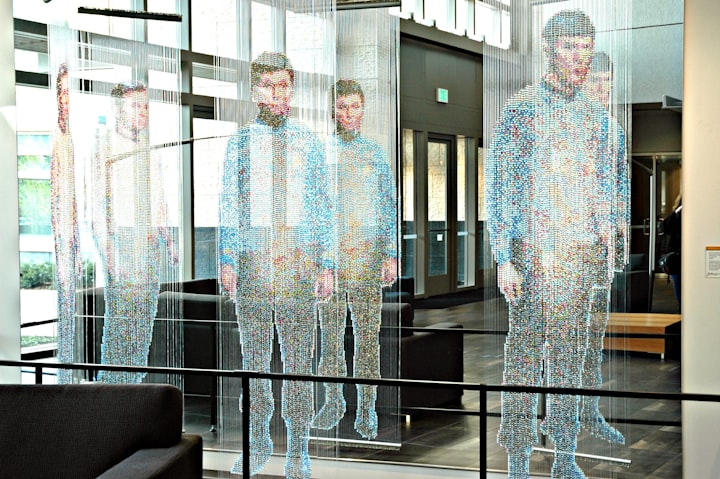Anthropology…. a tool for improving business?
Academic review of some anthropological approaches on the Bussiness world, and its links with Design field.

This article explores the consideration of Anthropology as a tool for improving business. Although reviled by the Academia, the use of anthropological theories and ethnographic practices for the growth of companies has had a parallel story with the discipline and faces a promising future.
Since a few years, Bussiness Anthropology's advocates have been employed by big firms and design studios. My research tends to apply such perspectives on the development of small and even personal business as the digital freelancers do.
A way towards a new economy
The transformation of capitalist economies in the last two decades of the twentieth century, increasing the global flow of goods and services, alongside the diffusion of information and communication technologies (ICT), have opened new markets and competitors for industries and individuals of the whole planet.
In this "post-fordist" era, the previous main role of producer agents has been transferred to the consumer or end user. That way, a “new economy” based on the provision of services and/or knowledges has emerged, "requiring companies to learn much more about the preferences of demographic groups" (Baba, 2006: 22).
Along this period, from 1980 to now, Baba distinguishes within the so-called Business Anthropology three interdisciplinary domains in which the practitioners of the discipline explore new opportunities for research and practice in the private sector:
- Organizational behavior and management
- Consumer behavior and marketing
- The “ethnographically informed” design of products, services and systems.
The latter would be considered the specific field of the Design Anthropology, an interdisciplinary activity that combines social sciences (also Psychology, Sociology or Linguistics) oriented to qualitative research, with the design itself, what involves engineers, technicians and even artists.
Baba places the cradle of this field at the Xerox Research Center in Palo Alto (PARC), California. There highlights the work of Lucy Suchman, who “radically reconstituted the nature of the design industry”. Her pioneering research about human behavior with computers (Suchman, 1985) applied specific ethnographical frameworks. Ethnography functioned so as method of collecting data to gain insight into real-world experiences and the needs of technology users.
Orientations on research
But what is the work of an anthropologist in a company? The orientations depend on the objectives of their research, be it independent or connected with the objectives of the institution in which it is introduced.
In the specific field of design ethnography, Wasson (2000) explains that the goal of research is to discover what the consumer does and why he does it, and that base of knowledge leads to create or improve products. Ethnography has then become an attractive resource for designers because "it provides a window into the ways in which consumers interact with products in their everyday lives."
However, she admits that despite the hype of ethnography in US design schools at late nineties, the discipline itself runs the risk of ending up being "a pale shadow of itself”:
In its most emaciated form, the term ethnography is simply used to refer to a designer with a video camera (...) The need to analyze those behaviors and situate them in their cultural context is poorly understood, even though such activities are essential parts of developing a model of the user experience that leads to targeted and far-reaching design conclusions” (2000: 384-385)
In this sense, Wasson claims the anthropological apparatus that supports the practice of ethnography, highlighting the self-reflexivity of participant observation and theoretical training that enables fieldworkers to identify cultural patterns.
Contributions to Design
According to Swedish authors Otto and Smith (2013), Anthropology contributes to Design with three of its constituent elements:
- First, it plays a role of cultural theory and interpretation: in Design is central the ideation of concepts, but does not use to theorize about the social context and the cultural meaning of things or services.
- Second, while Design focuses on innovation, an anthropological approach "investigates the past to understand the present, including its ways of anticipating the future."
- A third pillar of Anthropology, its practical development (that is, ethnography) allows to detect the orientation of values of the groups affected by design projects.
The task for design anthropology is to integrate and develop these traditional qualities into new modes of research and collaboration, working toward transformation without sacrificing empathy and depth of understanding" (2013: 4-5).
This type of research has been established only since the last two decades in some advanced and powerful North-American and European business. Also there are consulting agencies such as IDEO, SonicRim or Designit that opt for the interaction of designers and ethnographers to carry out innovation projects.
That way, interdisciplinary teams address not only technological challenges or product developments, but also the improvement of public services or even creative industries.
References
Baba, Marietta. 2006. “Anthropology and business”. Encyclopedia of anthropology: 83-117. H. James Birx, Ed. Thousand Oaks, CA: Sage Publications.
Geertz, Clifford. 1973. “Thick Description: Towards an Interpretative Theory of Culture”. Chapter I in The Interpretation of Cultures, 3-32. New York: Basic Books.
Klipper, Sebastian. 2015. „Die 10 wichtigsten Soft Skills“, in Soft Skills für Freelancer. Wissensvorsprung für erfolgreiche IT-Projekte, [“The 10 most important soft skills“ – Advanced knowledge for successful IT projects] pp. 153-159, Springer Fachmedien Wiesbaden.
Osterwalder, Alexander & Pigneur, Yves. 2010. Business model generation: a handbook for visionaries, game changers, and challengers. New Jersey: John Wiley & Sons.
Otto, T., & Smith, R. C. 2013. “Design anthropology: A distinct style of knowing”. In Design anthropology: Theory and practice, 1-29. Edited by Wendy Gunn, Ton Otto and Rachel Charlotte Smith. London/New York: Bloombury.
Ries, Eric. 2011. The Lean Startup: How Today's Entrepreneurs Use Continuous Innovation to Create Radically Successful Businesses. New York: Crown Business.
Suchman, Lucy A. 1985. Plans and situated actions. The problem of human-machine communication. Xerox Corporation, Palo Alto, California.
Wasson, Christina. 2000. “Ethnography in the Field of Design”. Human Organization 59: 377-388.




